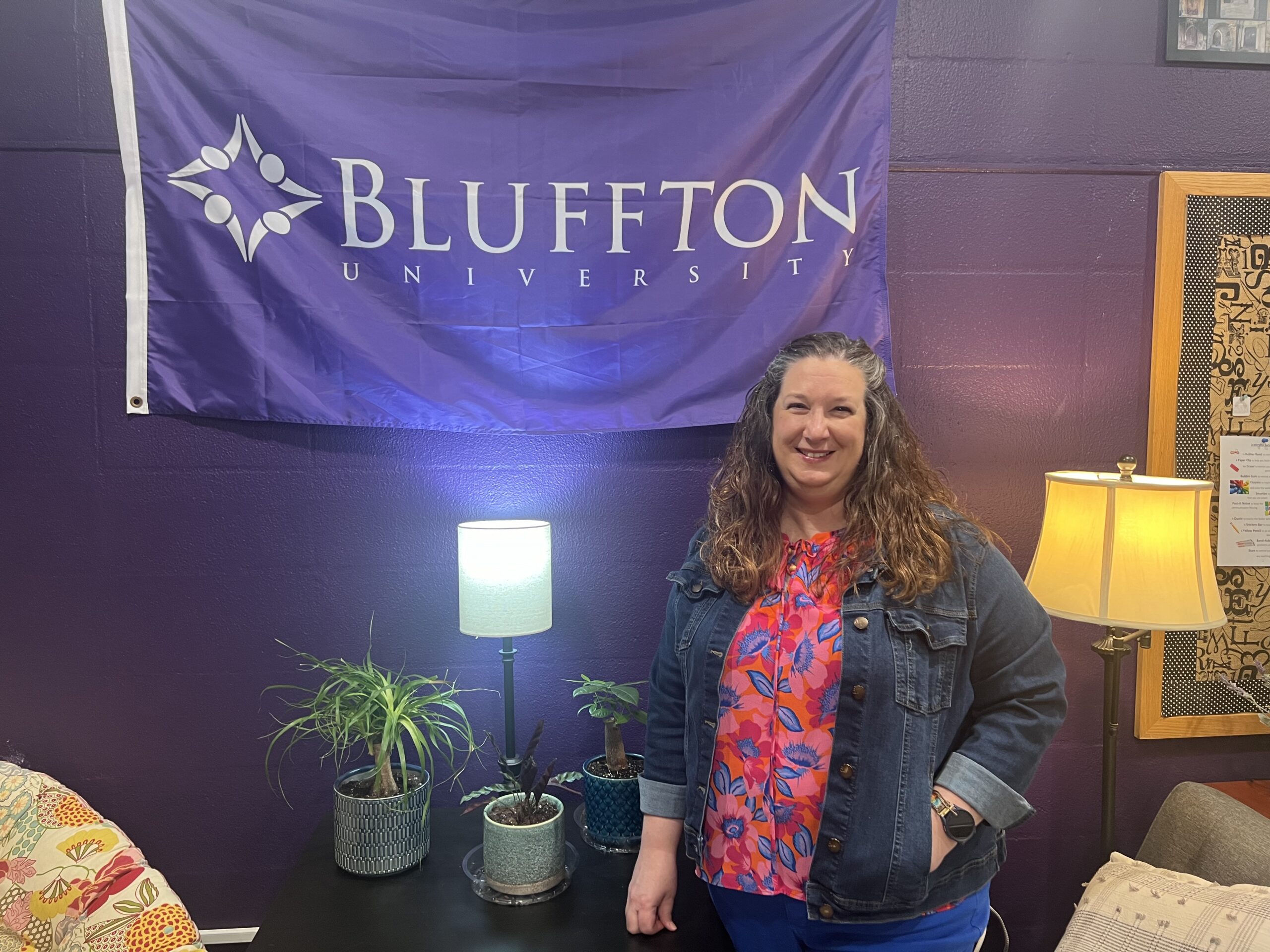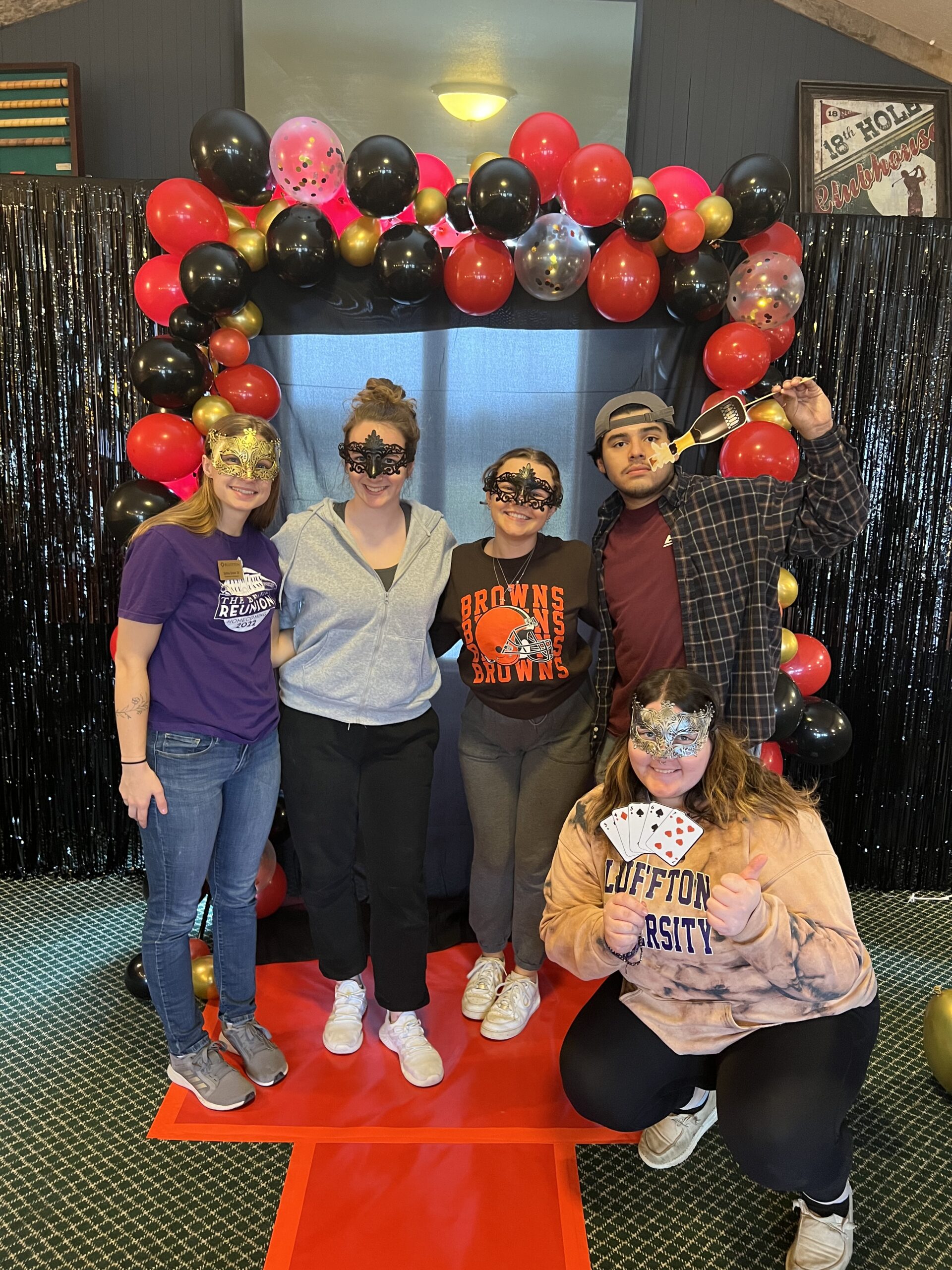T.R. Steiner describes ceramics as a trap that you fall into.
“You make one thing and then you think, ‘Well, if I would just do it a little differently. If the glaze would have behaved a little differently, then it would be better,’ and so you do another one. You keep going and it catches you,” he said.

T.R. Steiner photo by Blake Hershberger
Ralph Steiner III, more commonly known as “T.R.” teaches ceramics in the Art, Communication and Theatre department. Like many students who take a ceramics class to fulfill their fine arts credit, Steiner’s passion for ceramics began in the same way at Findlay College. Ceramics captured his imagination, and he ended up adding an art major alongside his biology major. He also did not realize at the time that the professor there, Gregg Luginbuhl, would become a lifelong friend and mentor.
Steiner’s journey with ceramics has not been ordinary. Right after graduating he opened his own studio and did pottery for 20 years alongside his work on the family farm. However, the pottery got stale. When you are a studio potter and you have to sell pots, sometimes you tend to make pots for the market. Instead of being true to the craft, Steiner said he was just focused on cranking the pieces out to sell. He also wanted to find more stable employment, so he sold the studio and equipment.
Although Steiner thought he had given pottery up, he heard a rumor that Luginbuhl was going to retire and began to think that since he was in one of Luginbuhl’s first classes, he wanted to be in one of his last classes. Steiner signed up for “summer mud” with Luginbuhl and his love of pottery was rekindled. Luginbuhl ended up recommending Steiner for the ceramic position at Bluffton University before he passed away in 2016. Steiner said he feels humbled to be in the lineage of so many great ceramic professors at Bluffton.
Steiner’s favorite aspect of teaching ceramics is the interaction with students.
“Being with students, especially young students that are just figuring things out it’s really unique and special,” Steiner said.
He mentions how great it is to see the “Aha!” moment for beginners after a time of struggle.
Ultimately, Steiner hopes to show students who want to pursue ceramics what they can do after they graduate.
“It’s a fairly large undertaking, but I want to express to our students that I hope they leave knowing it is doable,” he said. “Yes, it takes stuff, and it takes a little bit of money and effort, but it isn’t so daunting that they can’t do it on their own.”
Since Steiner is teaching and no longer has to sell his pots, he has been able to make things he enjoys and does not worry about what others think about his work. He said he has been able to experiment more.
“It is bubbling out of me right now,” he said.
Most recently, Steiner has been intrigued by a natural approach, instead of trying to fool the clay into something it is not.
“I’m going to show where my fingers went and the little funny things that the clay does that say ‘OK this is clay,’ ” he said. “I’m not trying to manipulate it into something slick and fancy. It’s a little more grungy and earthy.”
Steiner said he embraces the rips and tears and the way the clay sticks to itself and the impression you can put into it.
“It’s the journey that you take when making these things that I find fascinating and appealing.”






